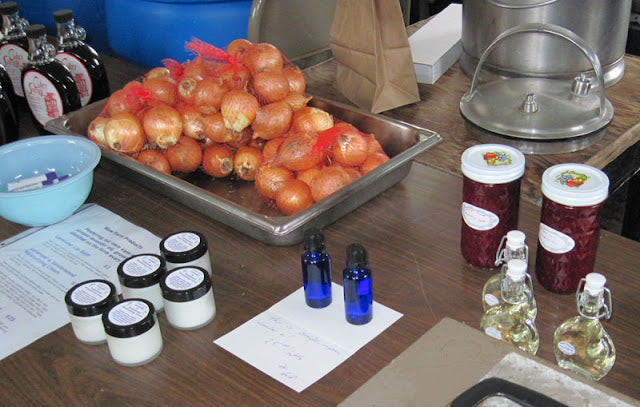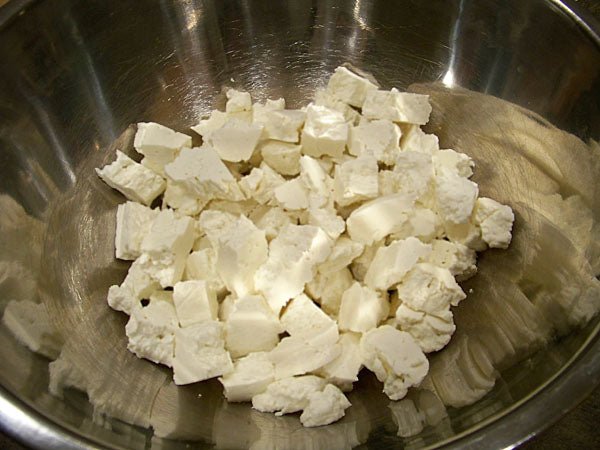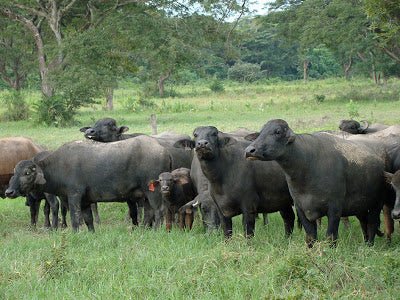 |
| Richard Odman and Rachel Onuf giving out samples of cheese |
This past January, I attended a small cheese tasting event at a local church. When I realized that the delicious cheese I was eating was made at the NMH school, (www.nmhschool.org) I asked Richard Odman, the farm manager, about his operation. He quickly diverted all credit to Rachel Onuf, the NMH assistant farm manager. I contacted her a few weeks later and she graciously allowed me to watch her make cheese.
Rachel runs the cheese making operation as part of her job as part-time farm assistant. She oversees the dairy wing of the farm from the care and milking of the cows to the making and marketing of the cheese.
She explained that the school has had a working farm since 1879, although it was shut down for awhile in the 1960s and early 70s). Currently, it is an important part of the students’ curriculum.
At NMH, every student works 4 hours per week to fulfill their “work job requirement.” Those students who work on the farm help Richard and Rachel grow vegetables and flowers, pick and jam raspberries, harvest and distill lavender, make apple cider and cider syrup, produce an average of 600 gallons of maple syrup per year, make ice cream, and, of course, they make cheese. NMH also sells raw milk and pasteurizes milk for the dining hall.
 |
| Amelia |
At this time, the school has 4 Jerseys- two milking, one bred and soon to be milking, and one charming heifer- Amelia (named after a recent graduate who returns each Spring to help with sugaring).
Amelia was jumping and playing by herself in the barn when I got there. She seemed happy to submit to some petting and I’m fairly certain she gets a lot of attention from the students!
 |
| In back-Cheddar, at left-Monterey Jack w/thyme, at right-Jack /w basil |
During their work hours in the milk room, the students might help make a stirred curd Cheddar, a Monterey Jack, or a soft cheese Rachel created (similar to Quark).
Some of the products made on the farm are available for the students to eat in the dining hall and they are all for sale at the school (see the end of this article.)
Note: I doubt if there are many schools in this country where the students and faculty/staff can purchase raw milk anytime For those of us who believe in the health benefits, this is very exciting!
I doubt, also, if there are many schools where the part-time assistant farm manager has two masters degrees. Rachel is working at her second career. When she isn’t making cheese she teaches (adjunct faculty at Simmons College) and consults in the assessment and prioritization of archival collections (which sounds as intimidating as it probably is!). Prior to this she was the Director of Archives for the Historical Society of Pennsylvania.
I’m certain that it’s a great asset for the school to have a staff member in the dairy program whose attention to detail and overall competence ensures that the state’s stringent legal requirements will be met. This is no small responsibility.
She keeps close tabs on her student workers. They understand the concept of maintaining safety standards by strictly following the procedures. The state laws are very particular about the handling of milk and the inspectors come every 21 days to test the milk and monitor the bacterial count. Like most dairies certified to sell raw milk, their bacterial counts are way below the maximum allowed.
 |
| The cider house where cheese, cider and ice cream are made. |
Six or seven years ago, Richard Odman and his former assistant, Alex Loud, started the cheese making program. Necessity is the mother of invention and, as anyone with milking cows knows, there is only so much milk you can drink!
It became clear that making cheese would provide interesting work for the students and an opportunity for outreach to the alumni and parents.
Today, when visiting family members come to the campus- the barn, the cider house (where the cheese is made) and the maple sugar house are popular areas of interest. Sales also skyrocket at these times and because the proceeds go to the school, it’s a benefit for all.
 |
| The sugar house where the maple syrup is made and the cheese is sold. |
When the dairy first started making cheese, the results were inconsistent. Because of the lengthy aging process, it took a couple years of experimentation before the farm had a consistent product.
They discovered that skimming 40% of the cream from the milk improved the texture. Further improvement came when a local cheese maker, Jeanette Fellows from Chase Hill Farm gave the farmers advice about cheese making while her daughter attended the school. Then, while at a cheese workshop at the University of Vermont, Richard learned about the benefits of adding LBC80 (Lactobacilli for texturing) when adding the culture to cheddars. Most recently, they have begun adding herbs.
Now, the cheese is top-notch. I tasted the Monterey Jack with Thyme and the flavor was excellent. I will definitely be going to the school from now on to buy my cheese.
 |
| 40 gallon bulk tank |
 |
| Ice cream batch freezer |
 |
| The vat holds 15 gallons of milk. |
Raw Milk Cheddar and Monterey Jack (sold also with thyme, basil, or rosemary) – $8/pound
Soft “Lindsey’s Creamy Cheese” $3 per 4 1/2 oz container
Ice cream (currently raspberry, vanilla and maple-soon to also include chocolate, coffee, and oreo cookie) – $3/pt, $5/qt
Raw milk is sold weekly to folks who arrange in advance by calling the farm at 413-498-3467.
While you’re there, look around at the views of the mountains. Take a few deep breaths and you will feel as if you have taken a vacation!
 |
| View from the barn |
 |
| View from the walk down the hill to the sugar house |
 |
| The sugar house |






































































































































































